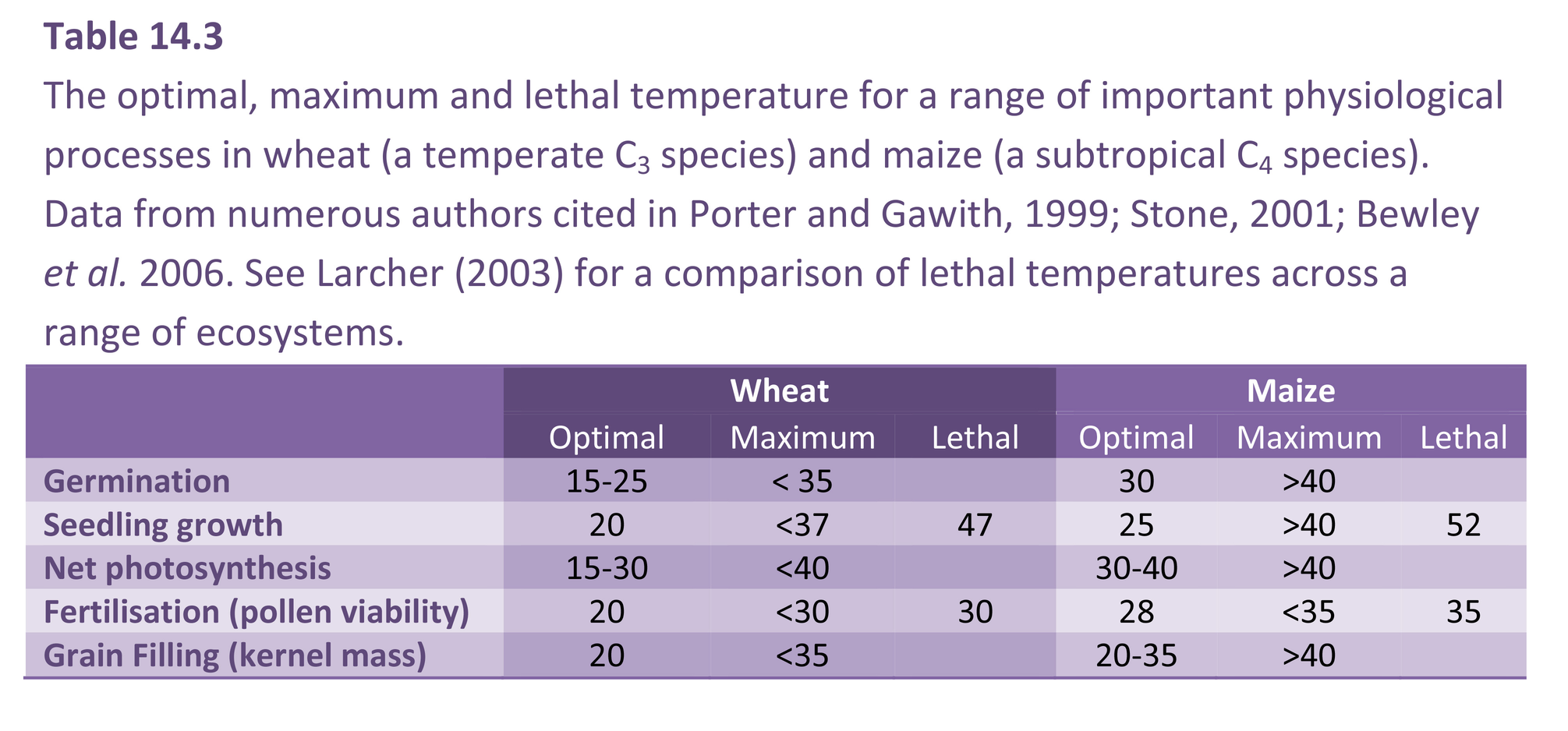Plants have developed a range of mechanisms to keep tissues from overheating (heat avoidance) or to prevent inhibition and injury where high temperatures occur (heat tolerance). A key aspect of tolerance to heat stress is the degree to which a tissue exposed to moderately high temperatures can acclimate in a way that improves its ability to function at higher temperatures (hardening or acquired thermotolerance).
Table 14.3 shows the optimum, maximum and lethal temperature for a range of processes in wheat and maize. Optimum temperatures for plant metabolism vary between species, reflecting the thermal range found in the environment in which they evolved or were selected (http://www.plantstress.com/Articles/heat_i/heat_i.htm). Metabolic processes in plants typically have an optimum below 30oC and temperatures above 40oC are considered a stress. The degree of damage from heat stress is mediated by the intensity, duration and rate of change in temperature as well as by the plant’s developmental stage and growing conditions prior to exposure (Larkindale et al. 2005; Allakhverdiev et al. 2008; Mittler et al. 2012). For most species, actively growing tissue is damaged by brief exposure to temperatures above 45oC, while prolonged exposure can result in fatal injury. Temperatures between 30-40oC can be termed moderately high temperatures and result in reversible inhibition of metabolism (moderate heat stress). Temperatures above 40oC can be termed very high temperatures as they result in irreversible or prolonged inhibition of metabolism (severe heat stress).
The effect of heat stress is often measured by exposing tissue to high temperatures for a short period (typically 0.5-1 hour) and measuring the response. This can be termed high temperature shock (heat shock). In addition to identifying the maximum threshold temperature above which metabolic activity ceases, heat shock experiments can determine the lethal temperature above which irreversible injury occurs (Table 14.3). Although lethal temperatures rarely occur when plants are grown within their native range, determining the lethal temperature is a useful method for assessing a species tolerance to high temperature in general. Species adapted and/or acclimated to high temperature environments can withstand temperatures well above 40oC. Extreme examples of tolerance to high temperature are found in the desert succulents, such as the prickly pear cacti (Opuntia spp.) which can survive short term exposure to 70oC (Nobel, 1988).

